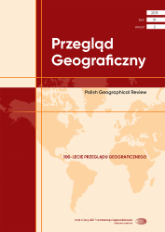- Tytuł:
-
Przegląd Geograficzny T. 91 z. 2 (2019)
Spatial exclusion in Lithuania: peripheries as “losers”, metropolitan areas as “winners” - Autorzy:
-
Pociūtė-Sereikienė, Gintarė. Autor
Baranauskienė, Viktorija. Autor
Daugirdas, Vidmantas. Autor - Data publikacji:
- 2019
- Wydawca:
- IGiPZ PAN
- Słowa kluczowe:
-
polaryzacja
wykluczenie przestrzenne
socio-spatial inequalities
Lithuania
nierówności społeczno-przestrzenne
Litwa
spatial exclusion
region wiejski
polarisation
rural region - Źródło:
-
CBGiOŚ. IGiPZ PAN, sygn.: Cz.181, Cz.3136, Cz.4187
http://195.187.71.2/ipac20/ipac.jsp?profile=geogpan&index=BOCLC&term=gg96601183
CBGiOS. IGiPZ PAN, sygn.: Cz.181, Cz.3136, Cz.4187 - Język:
- polski
- Prawa:
-
Licencja Creative Commons Uznanie autorstwa 4.0
Creative Commons Attribution BY 4.0 license - Linki:
- https://rcin.org.pl/dlibra/publication/edition/76535 Link otwiera się w nowym oknie
- Dostawca treści:
- RCIN - Repozytorium Cyfrowe Instytutów Naukowych
- Książka
Menu główne
Wyszukiwarka
Treść główna

